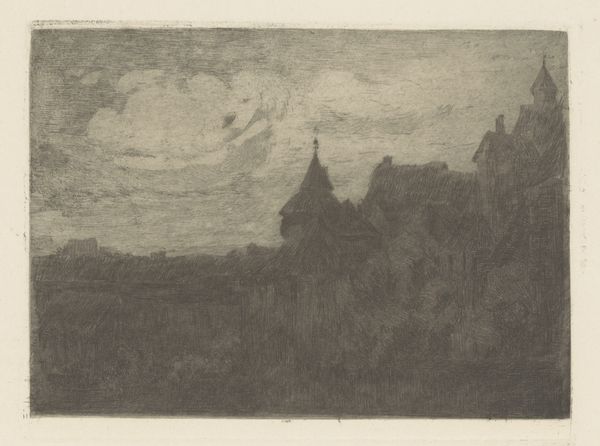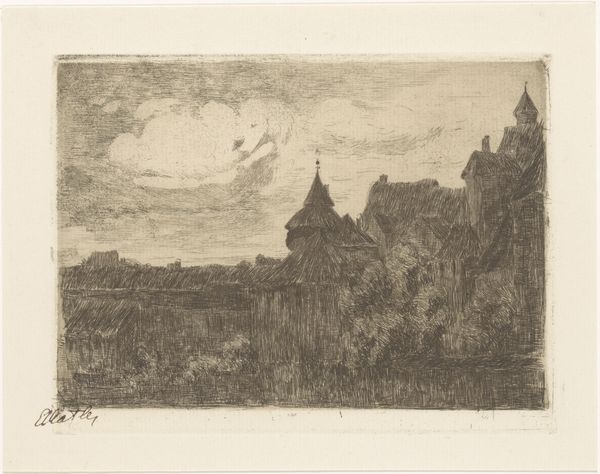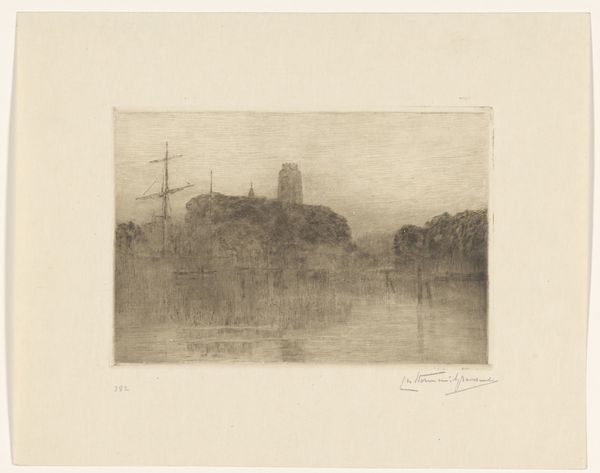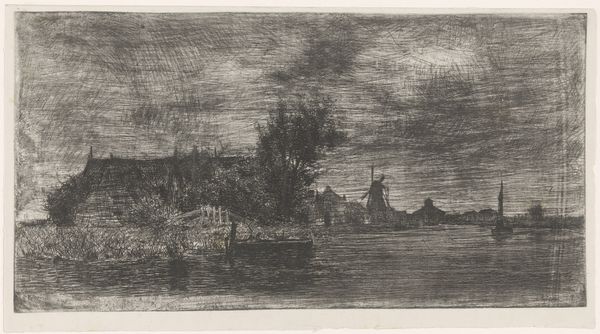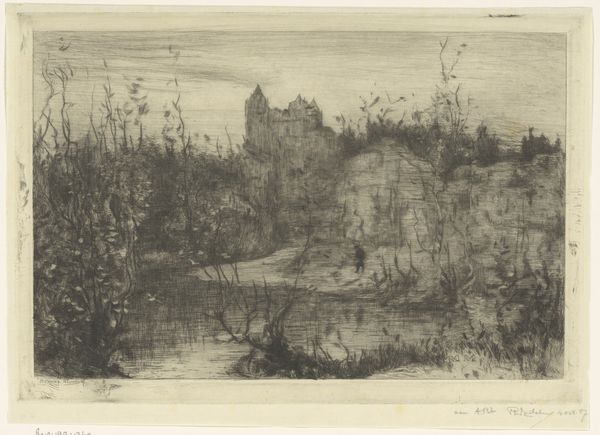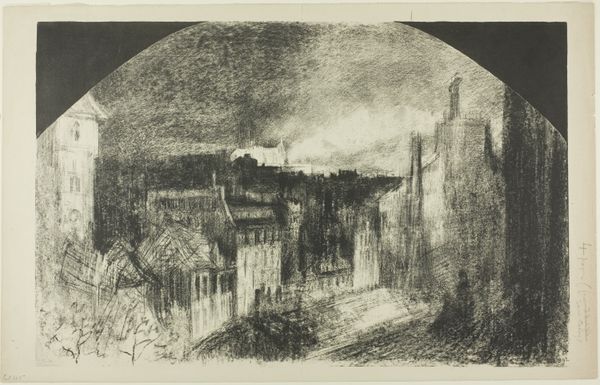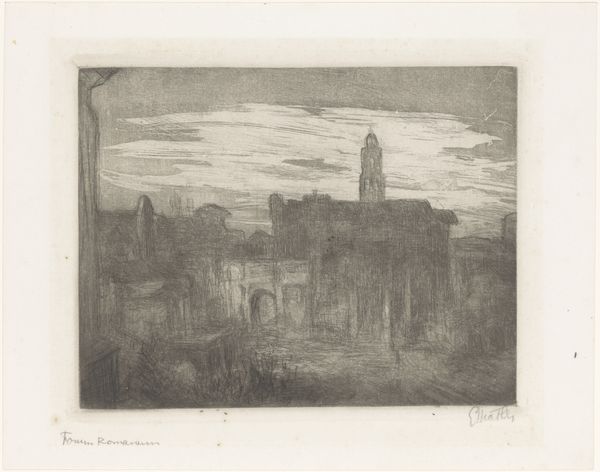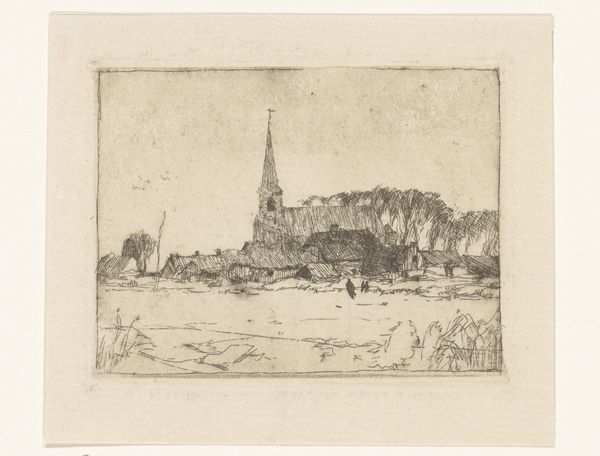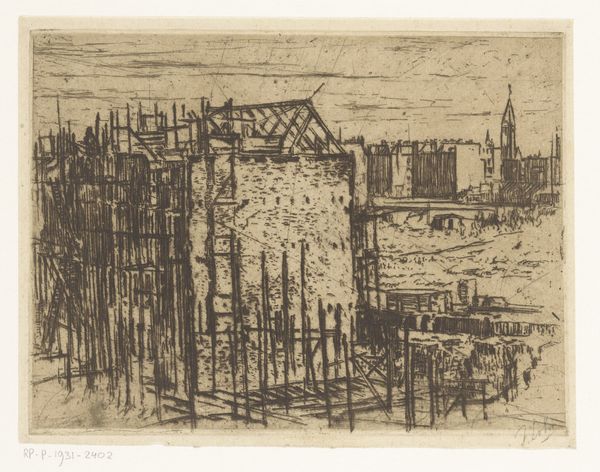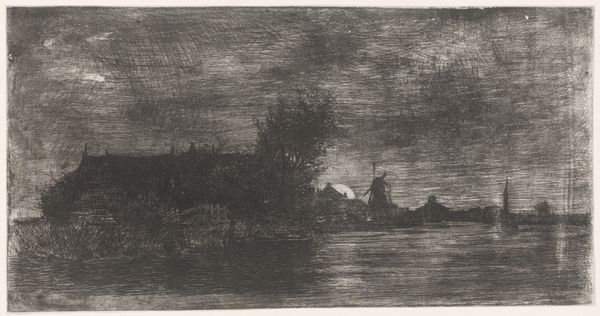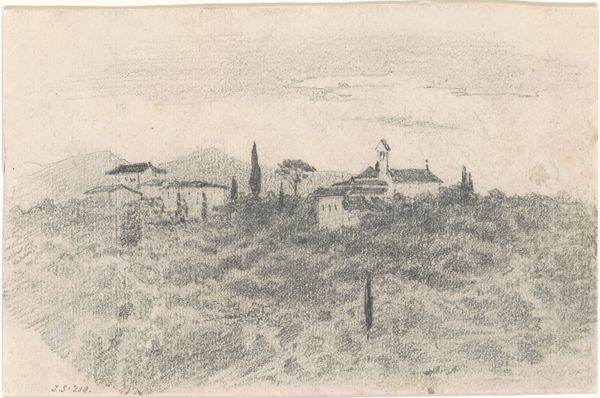
print, etching
#
16_19th-century
# print
#
impressionism
#
etching
#
landscape
#
etching
#
cityscape
Dimensions: height 101 mm, width 141 mm
Copyright: Rijks Museum: Open Domain
Editor: This is "Neurenberg," an etching from between 1867 and 1910. The artist is Etha Fles. It’s a striking cityscape, almost dreamlike in its hazy details. What do you see in this piece? Curator: It's the visual memory of a city, distilled into symbols. Nuremberg, particularly, carries heavy cultural baggage. Notice how the artist uses soft, blurred lines, almost like a fading photograph. What emotions does that evoke for you? Editor: A sense of distance, both in time and physically. Almost like a memory that's not quite clear. Curator: Precisely. The cityscape looms, monolithic. The dark foreground could symbolize the unknown future, or perhaps repressed history. Do you find the symbols used successfully transfer emotional information here? Editor: Yes, definitely. I'm used to seeing Nuremberg presented very differently. This rendition obscures, or perhaps softens the harshness, which is something I’ve never really considered when reflecting on the place. Curator: Indeed, it strips away the particulars, allowing the viewer to contemplate broader themes: the weight of history, the passage of time, the fragile nature of memory itself. Editor: I never would have considered how an artist might attempt to purposefully create something indistinct and shrouded, rather than crisp and sharp. Curator: Visual memory is selective. It clings to what's emotionally relevant. In this case, that might be a sense of foreboding, or perhaps just the quiet resilience of the city itself. Editor: It makes you realize that an artist's personal interpretation really does change the story. Curator: Exactly. And in doing so, it also invites you to participate in making that memory with them.
Comments
No comments
Be the first to comment and join the conversation on the ultimate creative platform.
